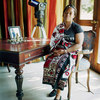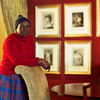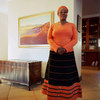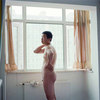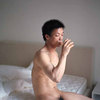Conversations about Photobooks: Charles Lane Press
MORE IMAGES
You know what makes a good book? Good pictures. Just good pictures. That sounds ludicrously simplistic, but that’s all I want when I look at a book: to see amazing images. - Seth Boyd
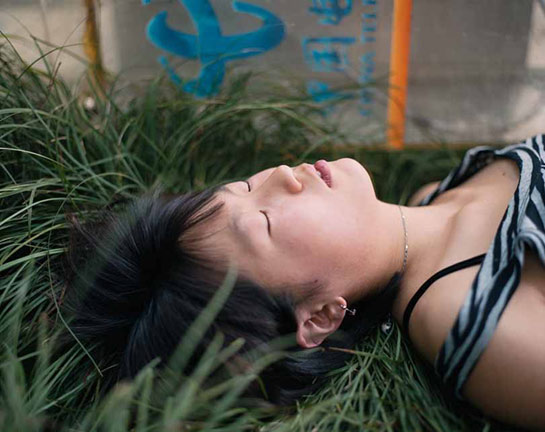
This is the first conversation in a new series focusing on photobooks and their makers. I’m talking with photographers Richard Renaldi and Seth Boyd of Charles Lane Press about what photobooks mean to them and about their experiences with their publishing company. (more)
Jörg Colberg: What do you like about photobooks in general? What makes them appealing to you?
Richard Renaldi: I think for me personally they are the ultimate expression of a project, in a way its completion. You work on something for a long time, and then in a sense it becomes completed by being in a book. You can share it with other people, and it has this immortality, because the book is an object, a thing.
When they’re well, thoughtfully crafted objects I love them. And it doesn’t even have to be a long-term project, it could be something that you put a lot of thought into, done in a short period. But I tend to think long-term projects are better because there’s the organic process of it growing and maturing.
Seth Boyd: I like photobooks because they solve the problem of sadness and loss that I feel when I see a beautiful show in a museum or gallery that I can’t see again. They satisfy my curiosity about whether or not the work stands the test of time and merits repeated viewing.
JC: What then makes a good or great photobook? What is it that makes some photobooks so much more precious for you than others?
SB: You know what makes a good book? Good pictures. Just good pictures. That sounds ludicrously simplistic, but that’s all I want when I look at a book: to see amazing images. And a well-edited, well-sequenced body of images - all of which are strong on their merits - is one of the most gratifying aspects of looking at photobooks.
RR: I agree with all that, and I also think that restraint can make a book very good as well. If someone uses restraint when editing and sequencing, I think that makes a better book. And I agree, good pictures.
I think the materials are important, but ultimately secondary because the work is what I’m going to respond to. And the concept. Is it cohesive? Does it come together? Also originality: Is it a unique voice? Is it showing us something new or looking at something we’ve looked at before but in a different way? Those are important considerations.
JC: You said that the photobook is the ultimate expression of a project, so when you work on projects do you have a book in mind, sometimes or all the time?
RR: Not all the time, but very often. My goal is for that project someday to become a book. But I have so many projects, I will never have as many books as I have projects. An exhibition is nice, but it’s only up for a little time. Like Seth said when you have a book you can have that forever. And it’s much more affordable than buying a print. A book is $30 to $100, but one print is quite a bit more than that.
JC: Photobooks also offer a more intimate experience of the photography. A gallery is more or less a public space, and then you stand in front of these pictures, maybe with lots of other people around you, and a photobook…
RR: … you have in your lap. Definitiely.
SB: That’s one of the nice aspects of viewing work in a book format that you have a physical connection to the work.
JC: How or why did you decide to produce your own photobooks? Why start a publishing house? It’s a big headache, isn’t it?
SB: It is definitely an undertaking that produces a level of stress that isn’t needed in anyone’s life. It’s purely elective angst. Putting a book together is a fun creative process… there’s nothing more gratifying than shepherding a project through from conception to final printed and bound product. But where the fun ends is where the real work begins: promoting the book and finding good homes for every volume.
JC: You started out selling everything online, right?
SB: We launched our website concurrent with our efforts to self-distribute through bookstores and to libraries. Though it helps us enormously when people buy directly through our website, we’re not strictly selling them online. They’re at Photo-Eye, they’re at Dashwood Books, they’re at ICP. They’re really just in a handful of bookstores though, because there are only a few that…
RR: … cater to photography books. We’re not in the big chain stores because they generally won’t carry independent photobook publishers, and we really encourage people to buy directly from us through our website since the profit margins in publishing are so small.
JC: And you’re not working with distributors?
RR: Not in the US.
JC: You have a distributer in Europe?
RR: In the German-speaking countries.
JC: You’re working on two new books now, and you’ve done two books. What criteria do you use for the books? The first book you did was some of your work, but in general what do you look for in the artists? When you design a book how do you find what you feel is the right format of the book?
RR: Because we’re so small and we’re doing just one or two books a year we had a bunch of projects in mind that would take us a few years to even get through. There’s a list of people we’d like to work with. But the criteria are what Seth said earlier, good photographs and working with photographers who are really thinking about what they’re doing, what their work is, work that’s cohesive.
SB: I would say we’re looking for work that is clearly staking out a territory, making a claim, or has a strong and courageous point of view.
RR: Like with our next book, [Shen Wei’s] Chinese Sentiment. When we first saw Shen’s work, we thought that it was really beautiful and fresh because the art world’s focus on China over the last five to ten years has been all about scale and globalisation. This is a view of China that is much more intimate.
SB: It’s a point of view that China is not strictly a global economic monolith of increasing strength, it’s a place where people live, make their lives, and have experiences analogous to the ones we have here. So the book is a window into a China that we don’t often see portrayed in American media, in American art galleries or museums. I think it’s a very important look at contemporary China that is underrepresented.
JC: While we’re at it do you want to talk about the other book that is coming after that, too?
SB: It’s a project by photographer Ian van Coller called Interior Relations. He’s a South African born artist who has made a series of portraits of the black domestic servants of white families in and around Johannesburg. The twist is that in the photographs, the women are wearing their finest clothes, sitting for formal portraits in the homes that they clean.
There’s a cognitive dissonance that exists in the images.. a tension that reveals the intersection of race, class and culture in South Africa in an extraordinarily powerful way. It’s an understated, but pointed critique of the institution of domestic service, the institution in which poor black people serve the quotidian needs of middle class and wealthy whites. It’s done in a completely new way. The commentary itself isn’t new, but it’s amplified in a very unique way in Interior Relations.
RR: They’re beautiful portraits.
SB: … and they’re wearing amazing outfits.
JC: You’ve had a book out with Aperture. I’m a little curious how your experience of making your own book here with Charles Lane Press was different from making a book with Aperture. Were there any differences, or was it the same experience?
RR: There were a lot of similarities. My experience with Aperture taught me how you would approach doing something on the scale that we were thinking of doing. I learned a lot of new things that I didn’t know.
With each books we do we are getting more knowledgeable and informed about how to make a photobook. In that sense, my experience has increased since the process of working on Figure and Ground, but there are some basic elements that are really the meat of making a book, which is how you’re going to edit, and sequence, and design it. Those are the three key points, and I think they’re all really important. Materials and all that are important, but those are the details. The real work is in the editing, sequencing, and designing of a book. The meat of that is inherently the same, regardless of where you do it, I imagine it would be for every book.
JC: Let me throw you a curveball. You said earlier that books are objects that you love, and you love to have the object and to see the project as an object. I would certainly agree with that. But I’m increasingly under the impression that photobooks have become maybe too precious in some ways. There’s a big market where people are selling books, they’re collectible and some books are really expensive. I sometimes feel when I look at a really beautiful book that I almost don’t even want to handle it because I could maybe get a fingerprint somewhere or the spine could break. Doesn’t that take a away a little bit from the experience? How do you balance that? Or do you even agree with me? Are photobooks sometimes a little bit too precious?
RR: It depends on the person handling the book.
SB: It does, it really does! In this room, you’re talking with someone who if he weren’t so lazy would have white gloves on every time he handled anything, even the newspaper. And somebody else who flips through books furiously, getting dents and dings everywhere and will eat pretzels over them, which I actually saw Richard doing once. I think it’s an individual choice to react with horror or fear when you see pristine white paper and beautiful prints, or just to dive right in.
RR: I think when you’re making a reproduction of a photograph the intent of the artist or photographer should be respected. To reproduce the photos in a way that reflects how the artist intended the work to look pays respect to the artist. And the viewer. It says this work should be printed as well as it can be printed. We should use the kind of paper that really suits the work, that is appropriate.
Some work needs to be big. This work [points at Bernhard Fuchs’ Autos] works really well big. I think the scale is very appropriate. I think scale is really important, and materials are. Some books feel really great on a matte, uncoated paper so it has a soft feel.
Those are questions I’m more concerned with rather than are photobooks too precious or not. Are prints on the wall of a museum too precious? It depends on how you think about it.
SB: If you go to a gallery or print room, you’re not going to be able to flip through prints, someone is going to do it for you. But you can leaf through a book at your own pace. You can spend as much time as you want looking and thinking about it. You can do it with whatever degree of cautiousness you’re comfortable with.
RR: For me as a collector of photobooks, I don’t think there are any books we bought because we thought that they would have a value on the secondary market. I’m just not interested in buying books to someday sell them again to make a profit. It’s not my motivation. It’s fun to hear about that you actually have an edition that has value, I have a Larry Clark first edition that I bought when he was my teacher, and he wanted twenty dollars for it. But that’s just cool. I’m not going to go to sell that.
Do you buy books for an investment?
JC: I actually have, but because I’m such a bad business person it has never worked out. I’ve done that with two or three books maybe. I don’t do that anymore.
I’m really neat with my stuff, so for a while I didn’t even dare to look at Alec Soth’s first edition Sleeping By The Mississippi because I was worried that I would ruin it. It’s pretty expensive. At some stage, I realized that I was just really stupid, because what I’m interested in is not the money, it’s the photography. And of course I’m not going to sell it, because a friend of mine gave it to me. It’s not just some object, it’s a special object. But that money aspect was somewhere in my mind.
RR: I think there is a certain emphasis put on preciousness. Certain books come out that are a small edition and that if they’re in a reasonable price range and the person has a lot of hype behind him everyone wants it. The buzz about it is, “Oh, you gotta get this, it’s going fast.” But that’s not necessarily the publisher’s fault. Consumers and collectors can be just as guilty of enabling that phenomenon.
JC: Thinking back, you would do book publishing again?
SB: Oh yes.
RR: I’d make some different decisions.
SB: Different decisions only in terms of marketing and sales strategies. I think what we’re most surprised at is the length of time it takes to sell out an edition of a book. We thought it would be somewhere in the range of six months to two years, but it’s turning out to be closer to maybe five years. That surprised me, I thought we would be able to sell them faster, but I think that’s more a function of our inexperience with marketing and not having built a distribution system for ourselves.
For some reason I think we thought that we’ll just put it up on the website and send out some emails to all our friends, and the books would be gone. It turns out we have to actually do some work and build a mailing list, a database, and establish sales channels.
But then random things happen that facilitate that, a blog post or a newspaper article. Every little mention here or there gets you a little more attention, more signatures on the mailing list, etc. Hopefully, we’ll get stronger and better at it as we publish more books. We have to if we want to keep doing it.
 By
By 